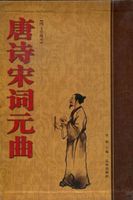At first all had gone well with the Union of 1841.It did not take the politicians long to learn how to use the power that responsible government put into their hands.After Elgin's day the Governor General fell back into the role of constitutional monarch which cabinet control made easy for him.In the forties, men had spoken of Sydenham and Bagot, Metcalfe and Elgin; in the fifties, they spoke of Baldwin and La Fontaine, Hincks and Macdonald and Cartier and Brown, and less and less of the Governors in whose name these men ruled.Politics then attracted more of the country's ablest men than it does now, and the party leaders included many who would have made their mark in any parliament in the world.Baldwin and La Fontaine, united to the end, resigned office in 1851, believing that they had played their part in establishing responsible government and feeling out of touch with the radical elements of their following who were demanding further change.Their place was taken in Canada West by Hincks, an adroit tactician and a skilled financier, intent on railway building and trade development; and in Canada East by Morin, a somewhat colorless lieutenant of La Fontaine.
But these leaders in turn soon gave way to new men; and the political parties gradually fell into a state of flux.In Canada West there were still a few Tories, survivors of the Family Compact and last-ditch defenders of privilege in Church and State, a growing number of moderate Conservatives, a larger group of moderate Liberals, and a small but aggressive extreme left wing of "Clear Grits," mainly Scotch Presbyterians, foes of any claim to undue power on the part of class or clergy.In Canada East the English members from the Townships, under A.T.Galt, were ceasing to vote as a unit, and the main body of French-Canadian members were breaking up into a moderate Liberal party, and a smaller group of Rouges, fiery young men under the leadership of Papineau, now returned from exile, were crusading against clerical pretensions and all the established order.
The situation was one made to the hand of a master tactician.The time brought forth the man.John A.Macdonald, a young Kingston lawyer of Tory upbringing, or "John A.", as generation after generation affectionately called him, was to prove the greatest leader of men in Canada's annals.Shrewd, tactful, and genial, never forgetting a face or a favor, as popular for his human frailties as for his strength, Macdonald saw that the old party lines drawn in the days of the struggle for responsible government were breaking down and that the future lay with a union of the moderate elements in both parties and both sections.
He succeeded in 1854 in bringing together in Canada West a strong Liberal-Conservative group and in effecting a permanent alliance with the main body of French-Canadian Liberals, now under the leadership of Cartier, a vigorous fighter and an easy-going opportunist.With the addition of Galt as the financial expert, these allies held power throughout the greater part of the next dozen years.Their position was not unchallenged.The Clear Grits had found a leader after their own heart in George Brown, a Scotchman of great ability, a hard hitter and a good hater--especially of slavery, the Roman Catholic hierarchy, and "John A." Through his newspaper, the Toronto "Globe", he wielded a power unique in Canadian journalism.The Rouges, now led by A.A.
Dorion, a man of stainless honor and essentially moderate temper, withdrew from.their extreme anticlerical position but could not live down their youth or make head against the forces of conservatism in their province.They did not command many votes in the House, but every man of them was an orator, and they remained through all vicissitudes a power to reckon with.
Step by step, under Liberal and under Liberal Conservative Governments, the programme of Canadian Liberalism was carried into effect.Self-government, at least in domestic affairs, had been attained.An effective system of municipal government and a good beginning in popular education followed.The last link between Church and State was severed in 1854 when the Clergy Reserves were turned over to the municipalities for secular purposes, with life annuities for clergymen who had been receiving stipends from the Reserves.In Lower Canada the remnants of the old feudal system, the rights of the seigneurs, were abolished in the same year with full compensation from the state.An elective upper Chamber took the place of the appointed Legislative Council a year later.The Reformers, as the Clear Grits preferred to call themselves officially, should perhaps have been content with so much progress.They insisted, however, that a new and more intolerable privilege had arisen--the privilege which Canada East held of equal representation in the Legislative Assembly long after its population had fallen behind that of Canada West.
The political union of the two Canadas in fact had never been complete.Throughout the Union period there were two leaders in each Cabinet, two Attorney Generals, and two distinct judicial systems.Every session laws were passed applying to one section alone.This continued separation had its beginning in a clause of the Union Act itself, which provided that each section should have equal representation in the Assembly, even though Lower Canada then had a much larger population than Upper Canada.When the tide of overseas immigration put Canada West well in the lead, it in its turn was denied the full representation its greater population warranted.First the Conservatives, and later the Clear Grits, took up the cry of "Representation by Population." It was not difficult to convince the average Canada West elector that it was an outrage that three French-Canadian voters should count as much as four English-speaking voters.














